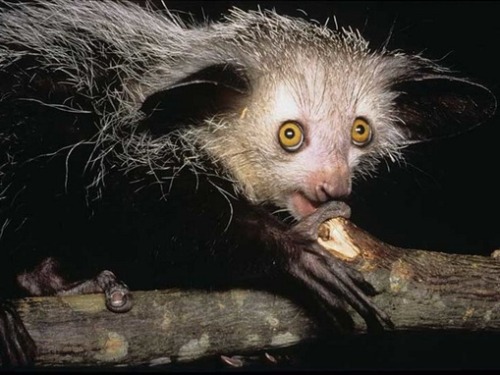it is so cute, it has charming eyes, i would really want to own one~
so here is about AYE AYE..
Aye-ayes can be found only on the island of Madagascar. These rare animals may not look like primates at first glance, but they are related to chimpanzees, apes, and humans.
Aye-ayes are dark brown or black and are distinguished by a bushy tail that is larger than their body. They also feature big eyes, slender fingers, and large, sensitive ears. Aye-ayes have pointed claws on all their fingers and toes except for their opposable big toes, which enable them to dangle from branches.
Aye-ayes spend their lives in rain forest trees and avoid coming down to earth. They are nocturnal, and spend the day curled up in a ball-like nest of leaves and branches. The nests appear as closed spheres with single entry holes, situated in the forks of large trees.
While perched aloft, the aye-aye taps on trees with its long middle finger and listens for wood-boring insect larvae moving under the bark. It employs the same middle finger to fish them out. The digit is also useful for scooping the flesh out of coconuts and other fruits that supplement the animal's insect diet.
Many people native to Madagascar consider the aye-aye an omen of ill luck. For this reason they often have been killed on sight. Such hunting, coupled with habitat destruction, have made the aye-aye critically endangered. Today they are protected by law.





